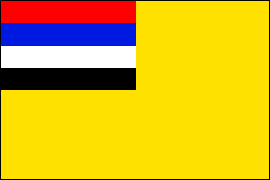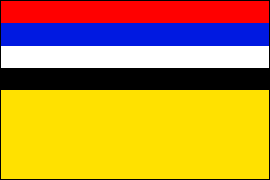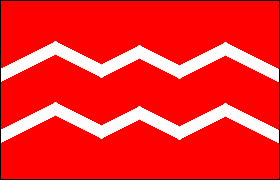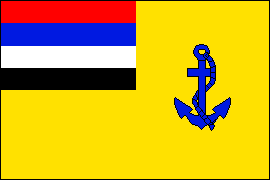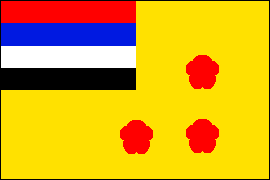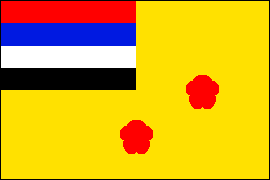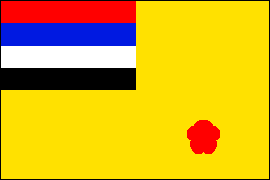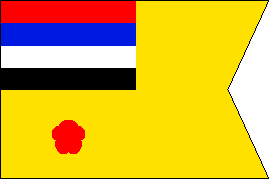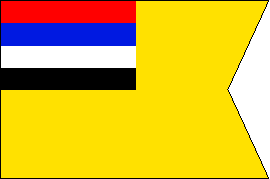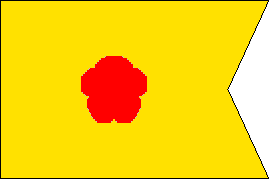EMPIRE OF MANCHUKUO
NAVAL ENSIGNS & FLAGS • 1932-45
In 1931, using the Mukden Incident as a pretext, Japan seized the Chinese province of Manchuria, detached it from China and installed a puppet government under the nominal authority of Puyi, the last Chinese emperor, who was designated as Regent of the Manchu State. In 1934 the name of the state was changed to the Empire of Manchukuo and Puyi was installed as emperor. Traditionally, Manchuria had been designated as the homeland of Puyi’s Qing Dynasty, which sprang from the Manchu ethnic group. In fact, however, more than 85% of the territory’s population consisted of Han Chinese. In the years following “independence” the Japanese and Korean populations increased rapidly, and there were also significant Russian and Mongol minorities.
Though economic and social development was rapid between 1932 and 1941, Puyi’s government possessed no meaningful authority. Real power lay in the hands of the Japanese Kwantung Army, whose commanding general also served as the Japanese ambassador to Manchukuo. Each minister of the government was “assisted” by a Japanese vice-minister who had the final say on all important issues. The Japanese government viewed the territory as a de facto colony and planned to resettle up to five million of its people there. Japanese immigrants flowed in and by 1945 there were more that 850,000 Japanese living in Manchukuo.
During World War II, the rich resources of Manchukuo were ruthlessly exploited for the benefit of Japan's war effort. The word of the Japanese Army was law, and by 1945 Puyi and his government had lost all vestiges of legitimacy. The last act was the Soviet invasion of July 1945, which shattered the Kwantung Army and rang down the curtain on the shadow Manchu empire. Shortly after Japan’s surrender Puyi, the last emperor that China would ever see, abdicated his throne. Manchuria remained under Soviet occupation for a year before being handed back to China.
The national flag of the Empire of Manchukuo was a variant of China’s post-imperial Five-Color Flag, with the yellow stripe (for the Manchu ethnic group) promoted to the field and the other four stripes as a canton. Upon the establishment of the Manchukuo Imperial Navy in 1932 a war ensign and a range of naval rank/appointment flags were adopted. The ensign was similar to the national flag, but with the four stripes extending from hoist to fly, while the appointment and rank flags were mostly based on the national flag. The device used on the rank flags was a stylized plum blossom. The national flag served as the naval jack. The flags for naval transport vessels and coast guard vessels were probably distinguishing flags that were flown in addition to the ensign.
The Manchukuo Imperial Navy was a small force of coastal patrol vessels, river gunboats, etc., most of which were hand-me-downs from the Imperial Japanese Navy. The largest vessel was an elderly ex-Japanese destroyer of World War I vintage, which served as the fleet flagship.
Flag Proportions: Manchukuo naval flags were made in 2:3 proportions.
Note on Sources: These illustrations are based on the naval flags of Manchukuo shown in the 1953-54 edition of Jane's Fighting Ships. Though no commissioning pennant was illustrated in Jane's, it was probably similar to the one depicted on this page.
